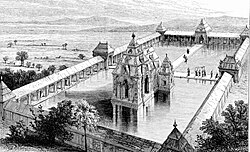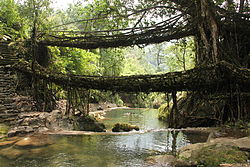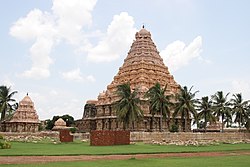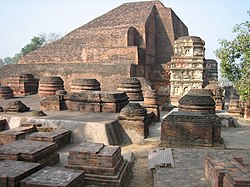Sun temple martand indogreek
Relevante Bilder
Relevante Artikel
Sonnentempel von MartandDie Ruinen des Sonnentempels von Martand liegen im Distrikt Anantnag im indischen Unionsterritorium Jammu und Kaschmir und sind von großer historischer und kultureller Bedeutung für das Kaschmirtal. Darüber hinaus sind die frühen Hindutempel Kaschmirs von großer politischer Bedeutung im anhaltenden Konflikt zwischen Indien und Pakistan um die Zugehörigkeit der Region. .. weiterlesen
Welterbe in IndienZum Welterbe in Indien gehören 42 UNESCO-Welterbestätten, darunter 34 Stätten des Weltkulturerbes, sieben Stätten des Weltnaturerbes und eine gemischte Kultur- und Naturerbestätte. Indien hat die Welterbekonvention 1977 ratifiziert, die ersten vier Welterbestätten wurden 1983 in die Welterbeliste aufgenommen. Die bislang letzten Welterbestätten wurden 2023 eingetragen. .. weiterlesen
Kaschmir (Division)Kaschmir oder auch Kaschmirtal ist ein Tal und eine Division zwischen dem Karakorum und dem Pir Panjal im indischen Unionsterritorium Jammu und Kashmir. Kein Teil des Tals wird gegenwärtig von Pakistan verwaltet, sondern es ist vollständig unter indischer Verwaltung. Das Tal ist etwa 135 km lang und 32 km breit und wurde durch den Jhelam gebildet. Kaschmir ist neben Jammu eine der zwei Divisionen von Jammu und Kashmir. Die Division gliedert sich in die Distrikte Anantnag, Baramulla, Budgam, Bandipore, Ganderbal, Kupwara, Kulgam, Pulwama, Shopian und Srinagar. .. weiterlesen
Sikandar ButshikanSikandar Butshikan, manchmal auch Sikandar der Ikonoklast genannt, war der sechste Sultan der afghanisch-stämmigen und seit der Mitte des 14. Jahrhunderts über weite Teile der Region Kaschmir herrschenden Shah Miri-Dynastie. .. weiterlesen










































